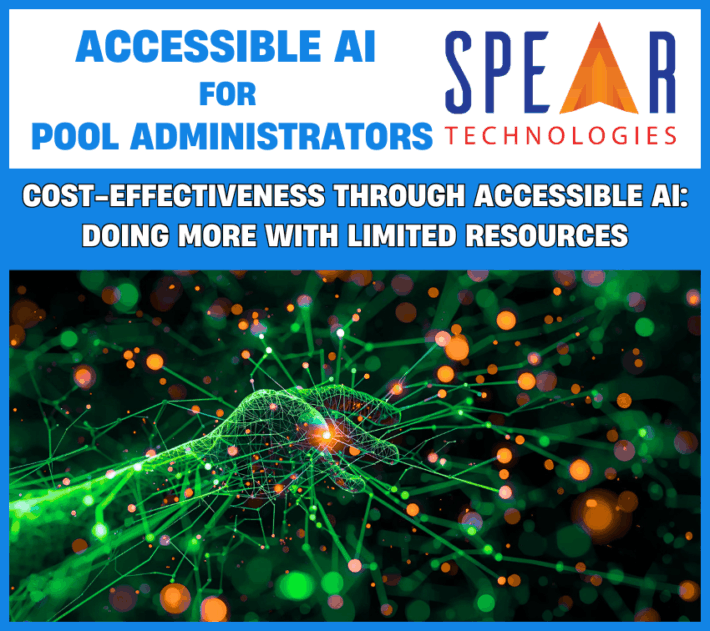Accessible AI for Risk Managers: High-Risk Claim Identification – Stopping Escalations Before They Become Losses

For Risk Managers, few challenges carry more weight than high-risk claims. These are the cases that quietly build pressure—headed toward litigation, mounting medical costs, or prolonged resolution delays—until they suddenly erupt into major financial losses. Traditional oversight methods often leave Risk Managers reacting after reserves spike, rather than intervening early.
And make no mistake—the stakes are high.
Consider the costs of high-risk claims by Line of Business:
- Property: A single catastrophic event recently cost insurers over $100 billion—and these incidents have increased by 40% in recent years.
- Healthcare: Escalation drove more than $18 billion in claims costs in 2023 alone.
- Worker’s Compensation: The average large claim now exceeds $3 million.
- Commercial Auto: Claim costs are up $30 billion over the past decade, fueled by higher bodily injury payouts, escalating litigation, and pricier vehicle repairs tied to advanced technology.
With stakes this high, risk managers can no longer afford to wait until problems surface. This is where Accessible AI changes the game – empowering teams to identify high-risk claims earlier, intervene faster, and prevent escalation before costs spiral out of control.
Accessible AI changes this dynamic by flagging risky claims while they are still developing, giving Risk Managers the visibility and lead time they need to protect budgets, strengthen oversight, and deliver proactive loss prevention.
Empowering Business Users with AI They Can Shape
If you read the first article in this series, you’ll recognize this section—it bears repeating. Every Accessible AI use case builds on this foundation: putting AI into the hands of business users who know the work best.
One of the most transformative aspects of accessible AI in insurance is the shift from developer-led to business-led model interaction. In traditional setups, any customization or retraining of AI models requires intervention from IT teams, data scientists, or external vendors. This dependency creates bottlenecks, slows innovation, and disconnects model development from those who understand the business problems best—your underwriters, claims adjusters, fraud investigators, and customer experience teams.
Why Business-User Accessibility Is a Game-Changer
When AI tools are designed for business users, the result is more responsive, agile, and relevant model development. Empowering business users to adapt and train AI models on their own yields multiple advantages:
- Faster Time-to-Value: No waiting on IT backlogs or vendor response times
- Higher Accuracy: Models reflect real-world operational needs and are continually refined by domain experts
- Greater Adoption: Tools that align with existing workflows and skill sets see higher engagement
- Scalable Innovation: Business teams become active participants in digital transformation, not passive consumers
This article highlights four high-impact examples of how Accessible AI can empower Risk Managers improve oversight, prevent losses, and protect their organizations.
High-Risk Claim Identification: Spotting Problems Before They Escalate
Accessible AI continuously scans claim notes, claimant history, and external data sources to flag claims trending toward severity. Instead of waiting for reserve increases or litigation warnings, Risk Managers get early alerts when a claim shows signs of escalating.
With this visibility, they can take immediate steps—redirecting workflows, engaging TPAs, or notifying stakeholders before costs spiral.
Impact: Fewer surprises, stronger oversight, and measurable savings in claim costs.
Why Early Intervention Protects Budgets
Every Risk Manager knows that the longer a high-risk claim runs unchecked, the more expensive it becomes. By surfacing risk signals early, Accessible AI allows for:
- Targeted resource allocation: Shifting experienced adjusters onto risky claims before they worsen
- Fewer litigation cases: Addressing potential disputes before they reach a courtroom
- Better medical cost control: Engaging with providers sooner to prevent unnecessary procedures or delays
The result is clear: proactive loss prevention that protects budgets and reduces downstream costs.
Case Vignette: Catching a Risky Claim Early
Consider a public entity managing a workers’ compensation claim. The initial incident seemed routine, but AI quickly flagged concerning notes about delayed recovery and claimant frustration. By alerting the Risk Manager early, the claim was reassigned to a specialized adjuster, who brought in additional medical review and communicated directly with the claimant.
Instead of escalating toward litigation and ballooning reserves, the claim was resolved faster, with far lower severity.
Result: Litigation avoided, costs contained, and oversight strengthened—all because AI surfaced the risk before it became a crisis.
Why It Matters for Risk Managers
For Risk Managers, the priorities are clear: strengthen oversight, prevent costly claims, and protect budgets while delivering accountability to stakeholders. High-risk claim identification with Accessible AI delivers exactly that. By surfacing risky claims early and enabling timely intervention, Risk Managers can prevent financial surprises, reduce litigation exposure, and better align with proactive loss prevention strategies.
This series will continue exploring how Accessible AI equips Risk Managers with the tools they need to stay ahead of risk—without adding complexity.
Next in the Series: We’ll take a closer look at how Virtual Agents are transforming vendor and constituent service, freeing Risk Managers from administrative tasks while improving accountability and responsiveness.
Ready to see how SpearClaims™ can help your team do more with less?
Schedule a Demo to see how SpearClaims™ with Accessible AI equips Risk Managers with stronger oversight, greater transparency, and proactive loss prevention tools.
Request Pricing to learn how cost-effective it can be to modernize risk management, reduce exposure, and deliver more value to your organization and members.



